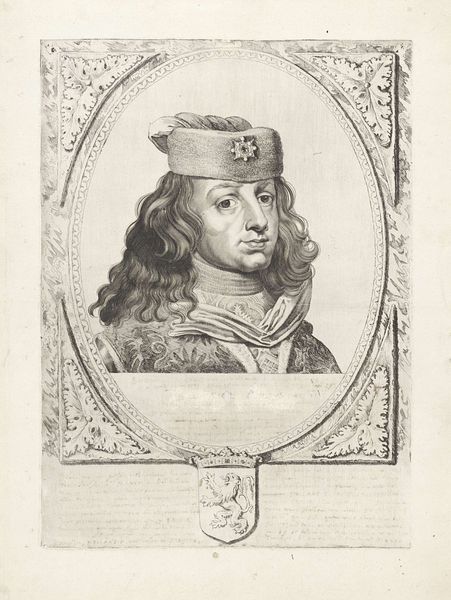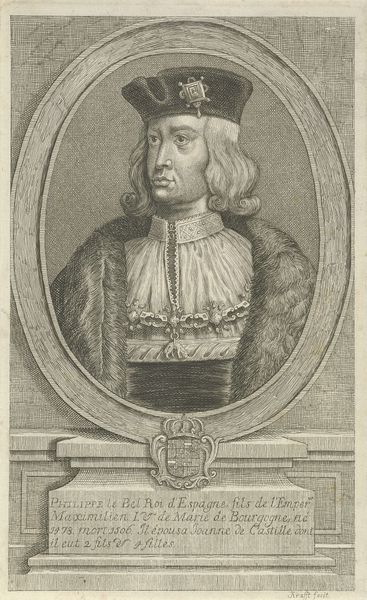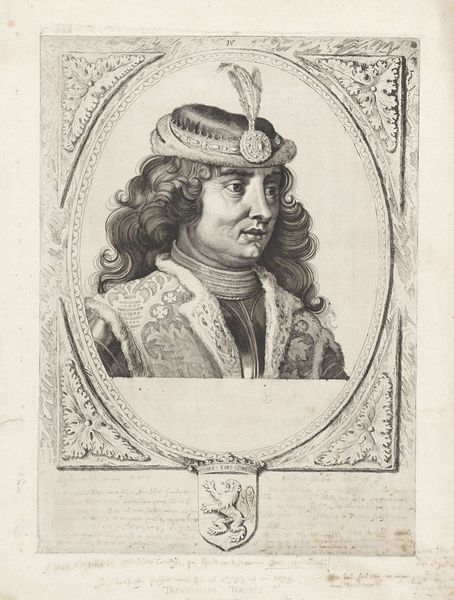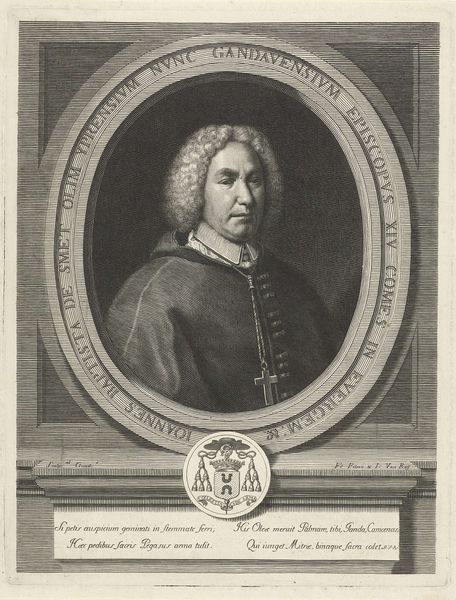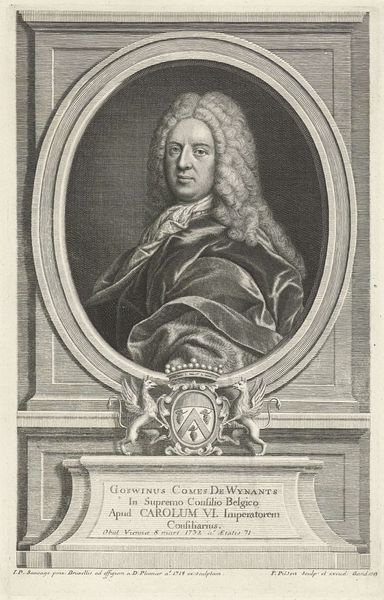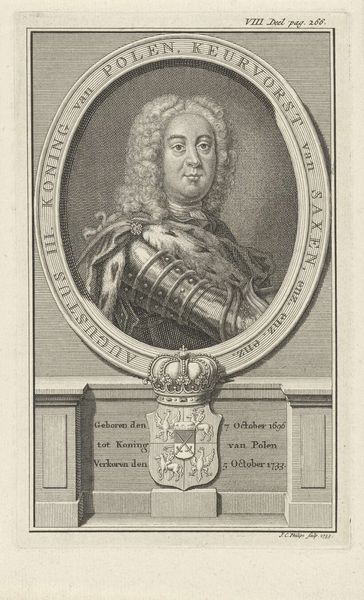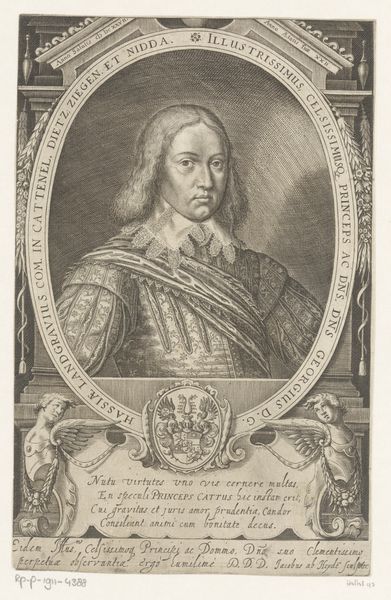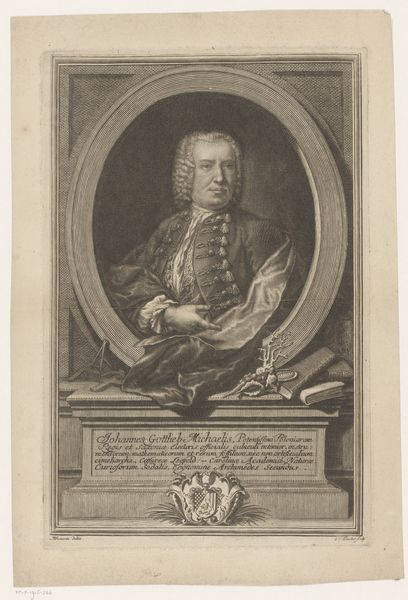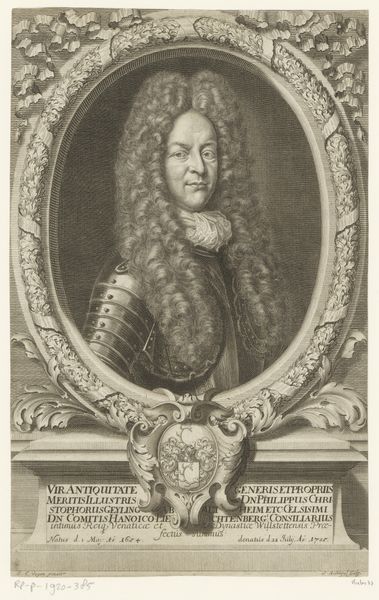
intaglio, engraving
#
portrait
#
baroque
#
intaglio
#
history-painting
#
engraving
Dimensions: height 262 mm, width 158 mm
Copyright: Rijks Museum: Open Domain
Curator: Looking at this portrait, one immediately senses a feeling of constraint, don't you think? Despite the Baroque details, the subject appears almost trapped within the oval frame. Editor: Indeed. This engraving by Jan Lauwryn Krafft, dating somewhere between 1704 and 1765, depicts Don Carlos, the Prince of Spain. What you describe as constraint could be attributed to the conventions of royal portraiture in the period. The oval frame, the carefully constructed presentation – they all contribute to a visual language designed to project power and lineage. Curator: That’s undeniable, and I certainly see the influence of sociopolitical factors that you highlight. Yet I find myself wondering how much of this representation is strategic, a tool employed to convey authority, versus genuine emotional capture. Was it typical of rulers who are so defined by blood lines, so constrained by them, and the immense pressure that come along with such roles. Editor: Well, history tells us Don Carlos died rather young, never having married, after being imprisoned by his own father amid suspicions of treason and mental instability. I suspect the image's overt representation as the classic regal presentation serves to obscure rather than illuminate inner complexities. The institutional framework—monarchy and its need for succession—overshadows the individual, much like the ornate frame contains him. Curator: Right, which might speak to the performative aspects of identity, right? How this piece participates in upholding power and gender structures... We see Don Carlos presented as masculine and assertive— but this seems performative. Was his actual agency as restricted in life as it is visually presented in the portrait? How was his selfhood constructed? Editor: Considering his tragic life story, as interpreted by history and presented in archives, that framing speaks volumes, no pun intended. This piece provides an excellent opportunity to analyze how social institutions actively create and perpetuate historical figures' perceived image, often distorting deeper understandings in their narratives. Curator: Ultimately, this examination highlights the intersection of the socio-historical with individual realities. Perhaps in observing Don Carlos we’re reminded that our contemporary examination is more important now than ever. Editor: Agreed. A somber reminder that images, even those seemingly straightforward like this portrait, are layered with complex meanings.
Comments
No comments
Be the first to comment and join the conversation on the ultimate creative platform.
